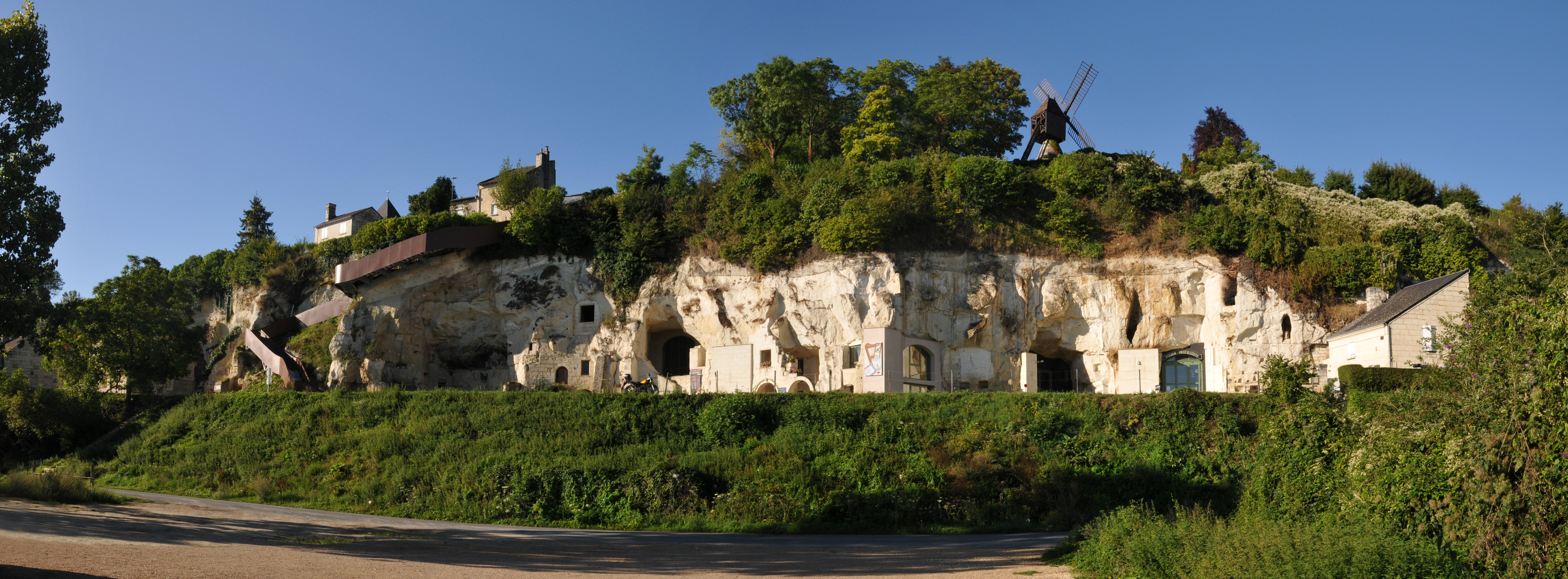Discovery trail - Turquant, a tender heart of stone

Turquant
Discovery trail - Turquant, a tender heart of stone
Medium
2h
3,9km
+81m
-81m
Embed this item to access it offline
On the banks of the Loire and at the foot of the hillside, the charming village of Turquant seems to have been born of tuffeau. Dug with kilometers of galleries, this limestone has long sheltered the hidden life of troglodytes. Follow the signposts along the trail to discover this surprising civilization.
From station 1, learn about the trade of "perreyeux" (quarrymen). Continue your walk and stop off at the village of craftsmen and sculptors, where you'll be welcomed into the coolness of their cellars.
Then stroll along the hillside to learn more about the daily life of troglodytes, understand the strange shape of our mills or imagine yourself as a Loire sailor. The tour continues in the famous Saumur-Champigny vineyards.
Continue on to the port of Turquant for a panoramic view of the Loire and its birdlife.
After your stroll, stop off to taste and buy wine at "La Grande Vignolle", the only visitable troglodytic seigneurial dwelling on a hillside in the Loire Valley, with an exceptional 16th-century fuye.
From station 1, learn about the trade of "perreyeux" (quarrymen). Continue your walk and stop off at the village of craftsmen and sculptors, where you'll be welcomed into the coolness of their cellars.
Then stroll along the hillside to learn more about the daily life of troglodytes, understand the strange shape of our mills or imagine yourself as a Loire sailor. The tour continues in the famous Saumur-Champigny vineyards.
Continue on to the port of Turquant for a panoramic view of the Loire and its birdlife.
After your stroll, stop off to taste and buy wine at "La Grande Vignolle", the only visitable troglodytic seigneurial dwelling on a hillside in the Loire Valley, with an exceptional 16th-century fuye.
Attachment
- Downloadpdf
Turquant, un tendre cœur de pierre
Description
Place de l'église, go to the starting station.
Then follow the red hands on wooden or mosaic posts from station to station.
Then follow the red hands on wooden or mosaic posts from station to station.
- Take the path to the right and follow the road along Rue des Martyrs for 120m. Follow the path as it bends to the left and you'll see the 1st station. Continue left through the wooded area. Join rue des Ducs d'Anjou and turn right for 50m.
- Climb the stairs on the left to reach rue Château Gaillard. Turn right for 250m, then right into rue du Val Hulin. Go straight ahead on rue des Ducs d'Anjou and discover the 2nd station on the right, opposite Les Pommes Tapées.
- Turn left up impasse des Ducs d'Anjou and take the stairs up the hill. The 3rd and 4th stations are located along this route.
- Turn left into impasse du Val Hulin, then right into rue du Val Hulin for 120m. Turn left on rue du Moulin Château Gaillard and continue for 150m. Turn left into impasse du Coteau, between vineyards and houses. After 200m, observe the panorama from the 5th station.
- Turn right and continue for 190m to Chemin des Cheminots. Continue for 80m. At the intersection, turn left, then right to reach the 6th station. Go down the ruelle de la Cour du Puits and continue right down the ruelle du Ponceau. Turn right on rue de la Bâte for 50m.
- Turn left down ruelle de la Fosse Rouge. At the crossroads, turn left, then right on rue des Fossés for 150m. At the intersection, take the second left onto rue du Caillou and go downhill 90m.
- Turn left onto the uphill path. Continue on this track, lined with low tufa stone walls, for 450m. At the low wall stop, fork left to discover the 7th station. Continue to the right. Continue for 300m to reach the 8th station. Continue for another 350m.
- Turn right on rue des Martyrs. Go straight on for 270m to find the starting station.
- Departure : Place de l'église
- Arrival : Place de l'église
- Towns crossed : Turquant and Montsoreau
Forecast
Altimetric profile
Report a problem or an error
If you have found an error on this page or if you have noticed any problems during your hike, please report them to us here: